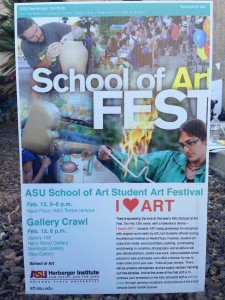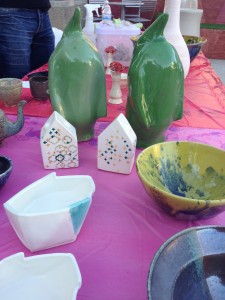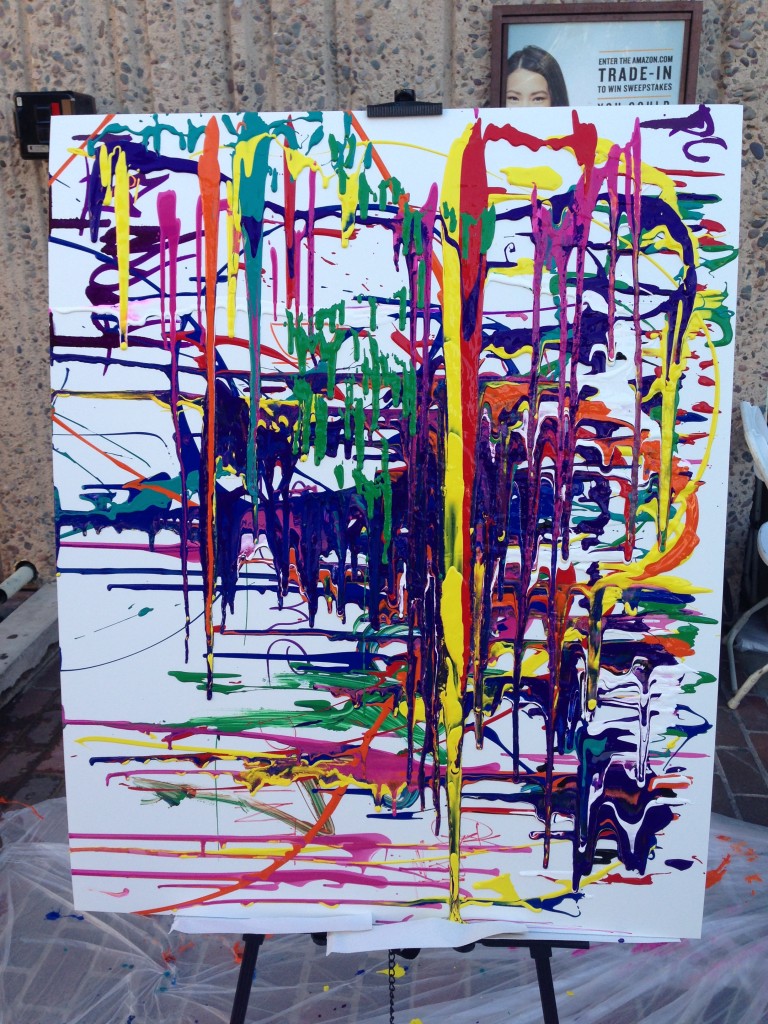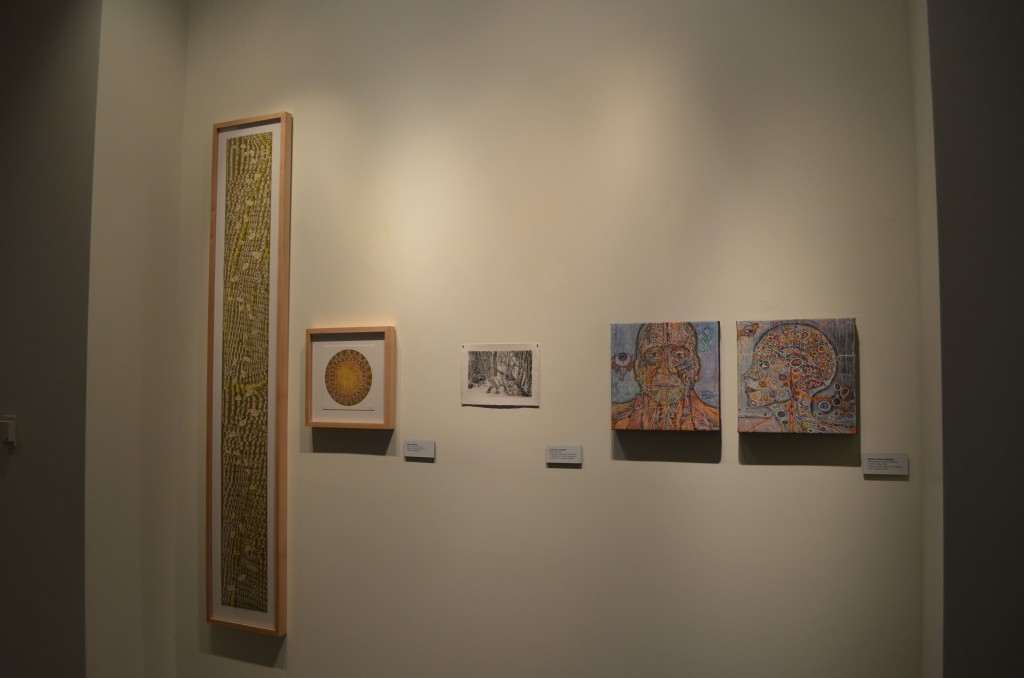
On Friday April 5 Superstition Review editors met with s[r] contributors Monica Martinez, Carolyn Lavender, and Mary Shindell to discuss their collaborative exhibition at Mesa Center for the Arts. The exhibition, entitled “Creature, Man, Nature,” explores the formation of bodies—animal, human, and rock—and the voices inherent in each form. When I walked into the exhibition, I was immediately struck by the size of several of the pieces on display. As Carolyn later told me, there is a certain power that comes from artwork that is as big as or bigger than oneself. This was true of Monica’s work, specifically a pair of massive paintings of the male and female forms, hence the “Man” portion of the exhibition title. Monica explained how her intensive study of human anatomy allowed for highly accurate portrayals of bodily structures, as well as a literal frame through which she could explore male and female energies. She challenges the traditional patriarchal energy by including feminine qualities in her male figure (modeled by her husband).
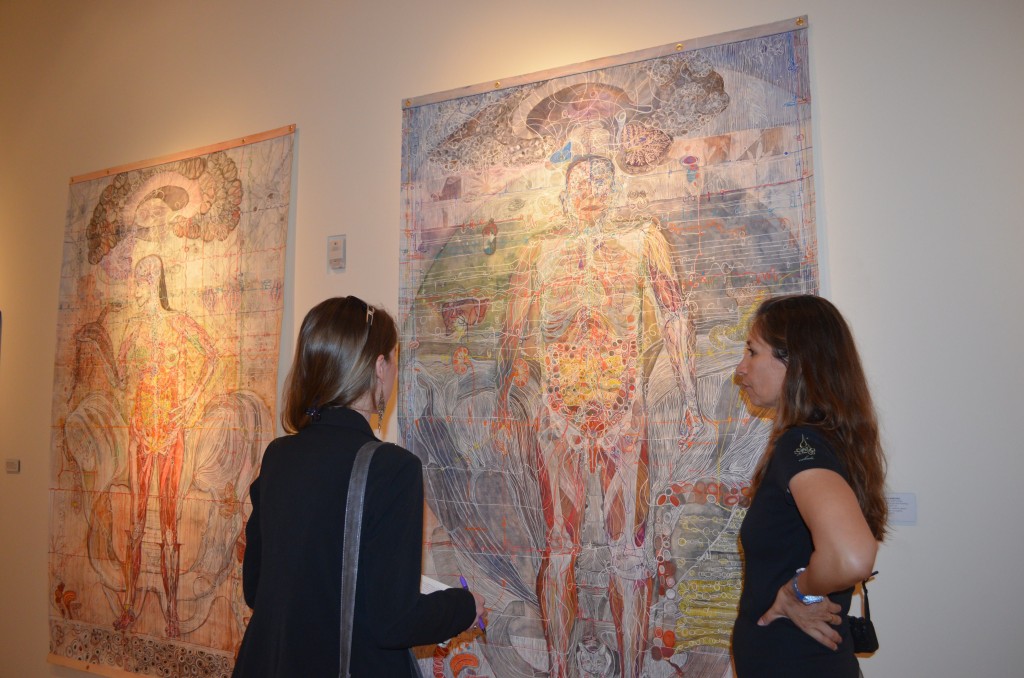
Monica’s pieces, “Body Male” and “Female Body,” draw in the viewer through the visceral anatomic imagery coupled with animal figures. In her painting of a female figure, she includes a snake, which instantly brings to mind ideas of the Christian creationist mythos wherein the snake functions as an antagonistic figure. However, the female faces the snake head-on as an equal, accepting of the snake as symbolic of knowledge, rebirth, and sexual passion. Conversely, the male figure is presented with a cat between his feet, modeled by Monica’s own pet. Her husband trained the cat to walk on a leash; due to this curious skill, the cat connected Monica’s family to the rest of her community, a traditionally feminine quality exhibited in conjunction with the male form. Directly beside Monica’s human subjects, Mary’s digital art piece, “There is a Mountain” is a room-wide print of her backyard view, fashioned on the program Illustrator. 26 layers allowed for the tiny details, such as sage bushes and cacti, to be created on a mountainside of elegant color and texture. Mary had had plenty of experience with her subject, having sketched and painted South Mountain multiple times prior to attempting a digital rendition. As she said, South Mountain dominates the landscape with its sprawling hills, and the size of the print, dominating an entire wall of the exhibition room, communicated the grand scale of the mountainside well.
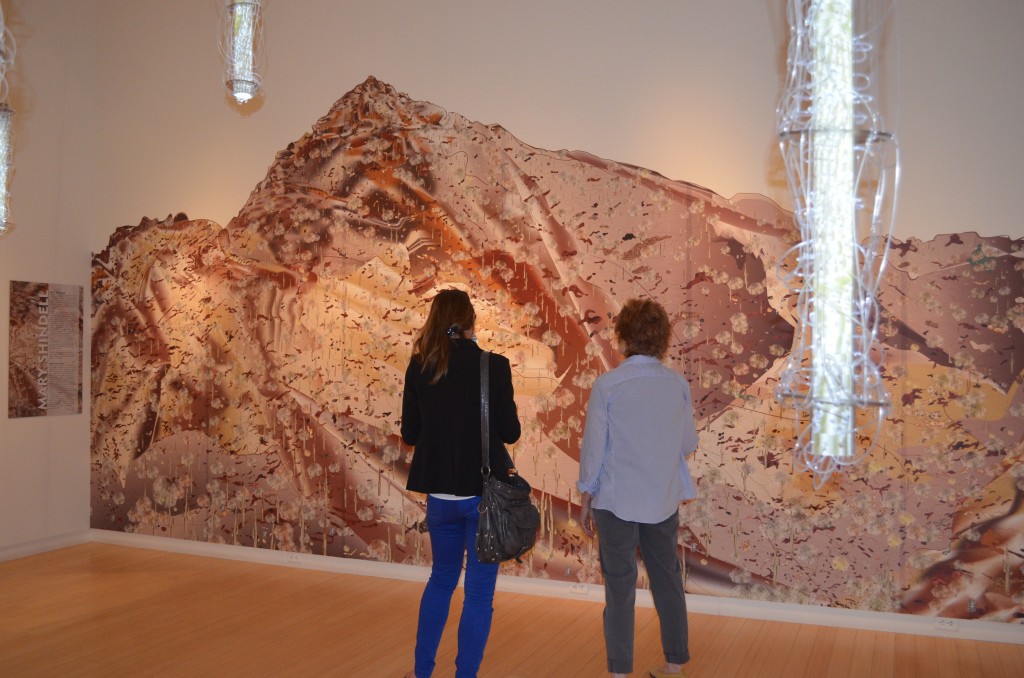
Mary explained to me the meticulous process of piecing together the different components of “There is a Mountain.” The minor details, like plant life, had to be modified outside of Illustrator in another program, such as Photoshop, so as not to overtax the main image file, and would then be incorporated back into Illustrator as a repeatable symbol. In order to create a soft, rolling effect for the mountain itself, Mary used the gradient feature, which she identified to be her favorite part of the process. As a whole, the intricate and time-consuming details paid off; viewers will be amazed to see the piece both at a distance and up close. The exhibition also benefited from Mary’s input for the lighting. Hanging light sculptures emulate the cacti in Mary’s backyard, functioning as relevant sculptures for the larger mountain view.
I addressed Carolyn’s art last, having finally made my way around the exhibition room. Carolyn’s work focused on the “Creature” aspect of the exhibition title, introducing a variety of animal figures on large panels as well as smaller paper sketches and paintings. She described her love of animals to me as that of childish fascination, a love fostered in her early years and carried firmly into adulthood. Her largest piece, “Preservation Woods,” features animals sketched and painted (acrylic) from photo and taxidermy models onto 10 foam-core panels. Carolyn explained to me how long the piece took to create, requiring 8-10 hours of tracing per panel.
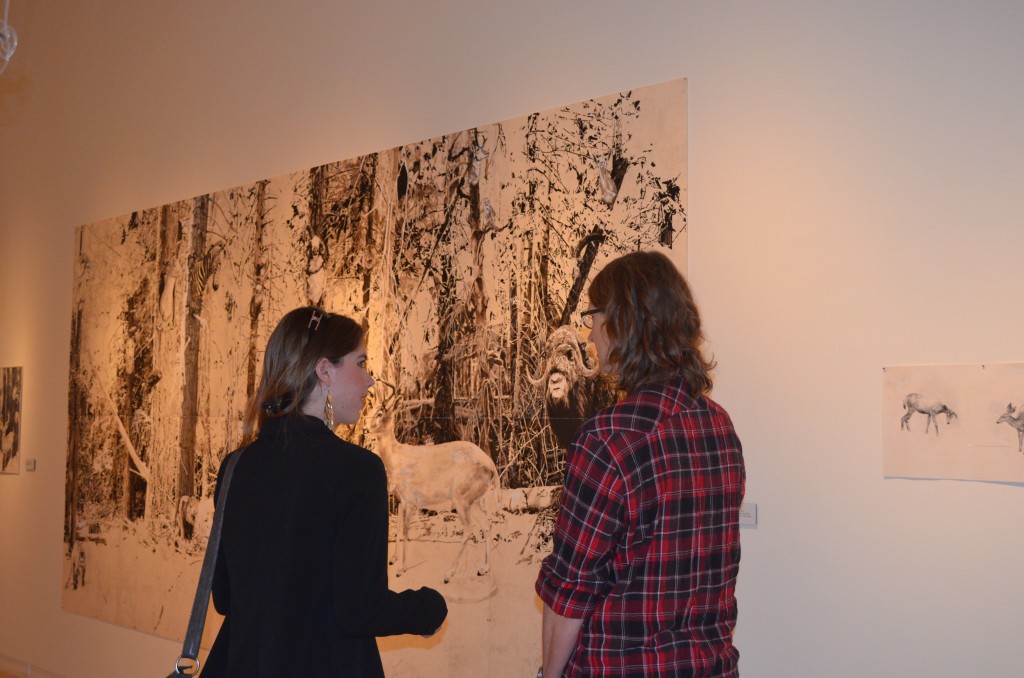
With that in mind, the raw, openness of the piece, fully compiled, hardly transmits the idea of “incomplete” or “unfinished” but of intentional invitation, drawing viewers’ eyes from the broad white expanses of the bottom panels to the detailed shadows of each animal figure. While Carolyn told me that there are still bits that she would like to work on (as with any piece of art), she was pleased with the outcome of her efforts and considered “Preservation Woods” to have been a learning experience, having never worked on so large a scale before this exhibition.
Leaving the exhibition after interviewing these three artists, I felt encouraged to pursue art myself. Each artist approached her craft in a different fashion, and this collaboration no doubt impacted those approaches. I look forward to seeing the future works of Monica, Mary, and Carolyn, and I hope that the exhibition inspires others.
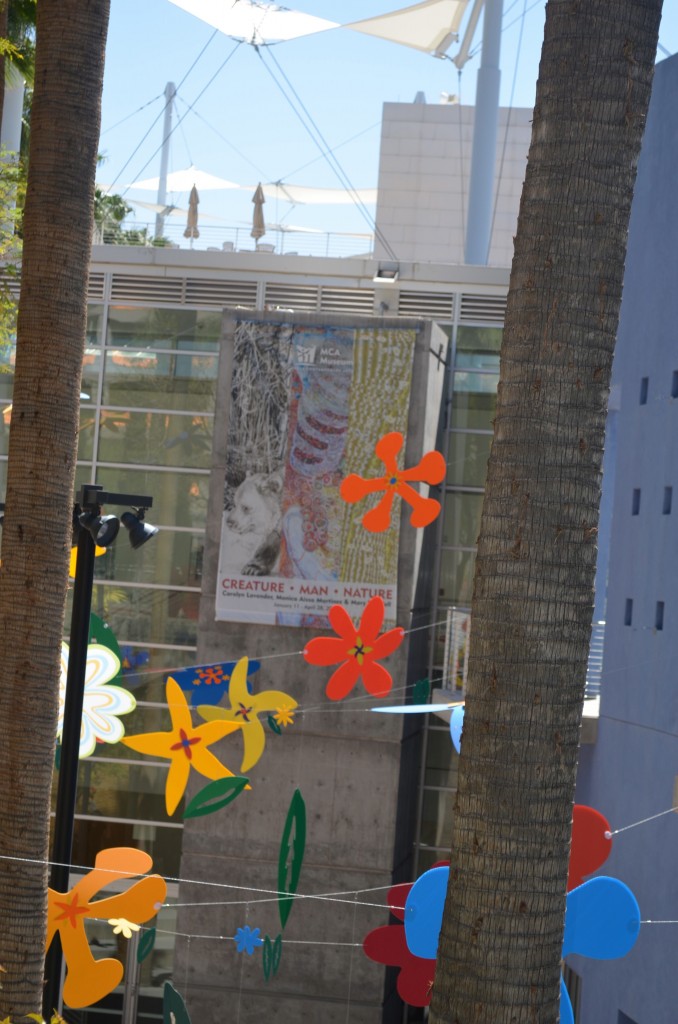
The exhibition “Man, Creature, Nature” is on display at the Mesa Arts Center until April 28.
